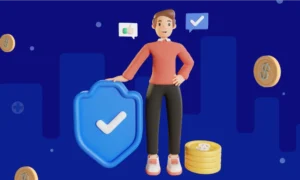In the realm of digital technology, the rapid transformation in location services is quite noteworthy. The advancements in geocoding API (Application Programming Interface) are playing a pivotal role in this transformation, providing developers with the tools to build sophisticated location-based services. This article will delve into the future of geocoding API advancements, illustrating how they are set to redefine location services, expand the horizons of geocoding API with new features, and pioneer the way for advanced geocoding solutions.
The Road Ahead: Geocoding API Advancements That Will Redefine Location Services
Geocoding API advancements are poised to redefine location services in numerous ways. The developments in geocoding API technologies are enabling the conversion of addresses into geographic coordinates with unparalleled precision. They are also facilitating reverse geocoding, where geographical coordinates are transformed into human-readable addresses.
A geocoding API example can be seen in the use of GPS navigation systems. These systems utilize geocoding API to convert destinations entered by users into precise coordinates. The geocoding API then provides routing instructions based on these coordinates. The future of such navigation systems is bright, with advancements in geocoding API allowing for more accurate and efficient location services.
Moreover, the integration of AI and Machine Learning with geocoding API is another significant advancement. This integration allows for predictive analysis, where the system can predict a user’s destination based on their past behaviour. It also enables the system to suggest optimal routes based on real-time traffic data.
Beyond Geocoding: Expanding the Horizons of Geocoding API with New Features
Geocoding API is not limited to converting addresses into geographical coordinates and vice versa. With the advent of new features, the horizon of geocoding API is expanding. One such feature is proximity-based services, where businesses can target customers based on their geographical location. For instance, a restaurant can send promotional offers to customers who are in close vicinity.
Another innovative geocoding API example is the integration with Internet of Things (IoT) devices. This allows for real-time tracking of IoT devices and enhances the functionality of smart home devices. For instance, a smart thermostat can adjust the temperature based on the geographical location of the homeowners.
The future of geocoding API also promises the integration with augmented reality (AR) and virtual reality (VR) technologies. This would enable users to experience a virtual representation of real-world locations, enhancing their interaction with the digital world.
3D Mapping: The Evolution of Geocoding API in a Three-Dimensional World
The evolution of geocoding API is not confined to two dimensions. With advancements in technology, geocoding API is stepping into the realm of 3D mapping, providing a more immersive and realistic representation of the real world. This is achieved by integrating geocoding API with 3D modelling software, creating a three-dimensional world from geographical data.
A geocoding API example in the context of 3D mapping is the creation of 3D city models. These models provide a realistic representation of cities, complete with buildings, roads, and landmarks. These 3D models can be used for various purposes, such as urban planning, disaster management, and gaming.
The future of 3D mapping with geocoding API is even more exciting. With advancements in technology, we can expect to see more detailed and accurate 3D models. Moreover, the integration of 3D mapping with AR and VR technologies can provide an immersive experience, allowing users to explore virtual cities as if they were there in person.
Data Visualization: How Geocoding API Enhances the Interpretation of Location Data
Geocoding API plays a crucial role in data visualization, particularly in interpreting location data. By converting addresses into geographical coordinates, geocoding API allows for the visual representation of location data on a map. This visual representation aids in the analysis and interpretation of data, making it more intuitive and understandable.
An example of data visualization with geocoding API is the creation of heat maps. Heat maps represent data through variations in colouring. When applied to location data, heat maps can visually represent the density of data points in different geographical areas. This can be particularly useful in identifying patterns and trends in the data.
The future of data visualization with geocoding API is promising. With advancements in technology, we can expect more sophisticated and interactive data visualization tools. These tools will not only enhance the interpretation of location data but also make it more accessible and engaging for users.
The Future Map: Pioneering the Way for Advanced Geocoding Solutions
As we look towards the future, it is clear that geocoding API advancements are pioneering the way for advanced geocoding solutions. The integration of AI and Machine Learning, the advent of new features, the progression into three dimensions, and the role in data visualization – all point towards a future where geocoding API will be at the forefront of location services.
The future map painted by geocoding API advancements is one of endless possibilities. Whether it is in the realm of navigation systems, proximity-based services, IoT devices, AR and VR technologies, 3D mapping, or data visualization, geocoding API is set to redefine the way we interact with the digital world.
In conclusion, the journey of geocoding API advancements is far from over. As we continue to map the future, we can expect to see more innovative geocoding API examples that push the boundaries of location services. With the rapid pace of technological advancements, the future of geocoding API is indeed promising.



































